The 70s decor trends we love – and the ones we hate
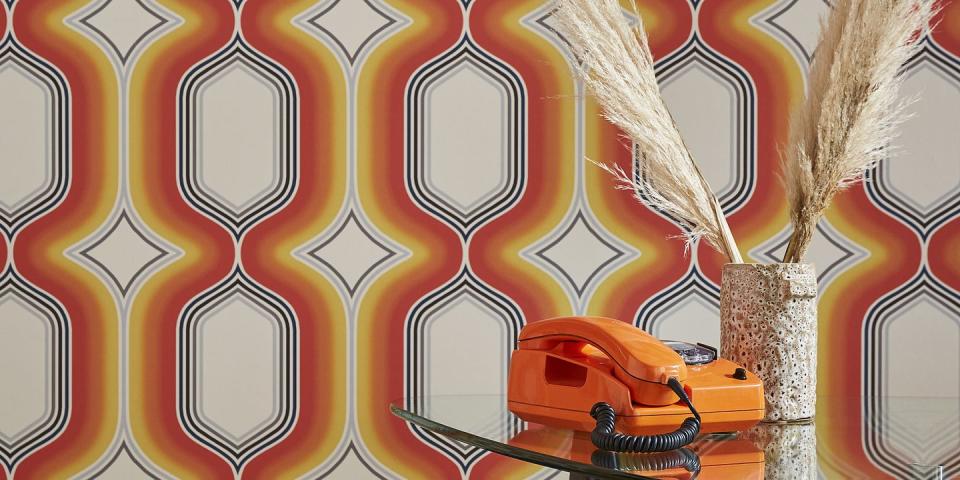
From Abba getting back together to Holly Hobbie smock dresses on the catwalk, the Seventies is the go-to decade this autumn because it taps into nostalgia and reminds us of positive influences and joyful design, says Andrew Henry, director at Andrew Henry Interiors.
However, there's a knack to incorporating the correct touchstones without turning your home into the set of an Austin Powers movie, warns Beth Lewin, design studio manager at Portfolio Home and north-west regional director for the Society of British Interior Design: "Mix in items with your own style and other trends such as boho to give it a contemporary feel. Don't go overboard with the typical bold Seventies colours, psychologically this will create too much stimulation. Muted shades with pops of warm earthy shades like mustard yellow and burnt orange will give you a fresh and modern Seventies look with a calming, homely atmosphere."
Here are five Seventies trends we love – and five which should stay firmly in the past:
Geometric prints and wallpaper
Pattern is very Seventies. Wallpaper with a graphic or repeating print brings this element into the home, such as Graham & Brown's Bohemian Dream, a soft geometric pattern, with orange fading to a warm ombre with a teal and grey outline, on a neutral backdrop.
"I do love graphic wallpapers, but you should always try to use a wallpaper that doesn’t give you a headache in the morning," says Emma Deterding, founder and creative director at Kelling Designs. "The repeat should either be small enough to blur or large enough to be meaningful. Make sure the scale of the pattern is right for your room."

Rattan, bamboo, wicker, cane
"Stepping away from the sleek minimalism of previous years, customers are opting for nostalgic retro-inspired pieces that channel casual comfort and champion natural materials," says Rachael Fell, buying manager, furniture, at Habitat. "Seventies-inspired designs have seen a huge resurgence in recent months with rattan and bamboo materials favoured for their ability to balance sleek lines with a rustic, handcrafted look."

Habitat's Astri king-size rattan headboard is very Fleetwood Mac. Also check out the Indi rattan and mango wood furniture range at Dunlem, particularly the sideboard, and storage solutions including a neat French cane bathroom basket.
Corduroy cushions and upholstery
Rebecca Snowden, interior style advisor at Furniture And Choice, says comfy luxe corduroy is a nostalgic Seventies trend and a top pick for sofas and cushions: "This material does double duty by not only delivering comfort but also a fashionable touch with its unique texture." There's a Cassie Cord Fabric L-Shape Corner Sofa, in mink, charcoal grey or grey.

A quick way to bring in corduroy is to add a cushion or two – such as the York High Low Corduroy Cushion in Teal, from Yorkshire Fabric Shop. Or add a real Seventies throwback, a Corduroy Retro Classic Bean Bag in a range of funky jumbo cord colours including mustard and purple (deep of course).
Reactive glaze dinnerware
The artisanal hand-thrown look of reactive glaze dinnerware usually combines two or three complementary shades in a pattern which highlights individual swirls and speckles. "With its effortlessly undone finish, reactive glaze dinnerware taps into a growing desire for organic place settings as we seek out more relaxed finishes over perfectly polished ceramics," says Nadia McCowan Hill, Wayfair's resident style advisor.
Glassware
Gorgeous glassware such as vases and bowls in rich jewel colours or sharp monochrome are an easy way to bring in Seventies chic. Ideally, you're looking for a shape that combines angular lines with gorgeous bulbous curves, such as Nordic Nest's Bloomingville glass vase.
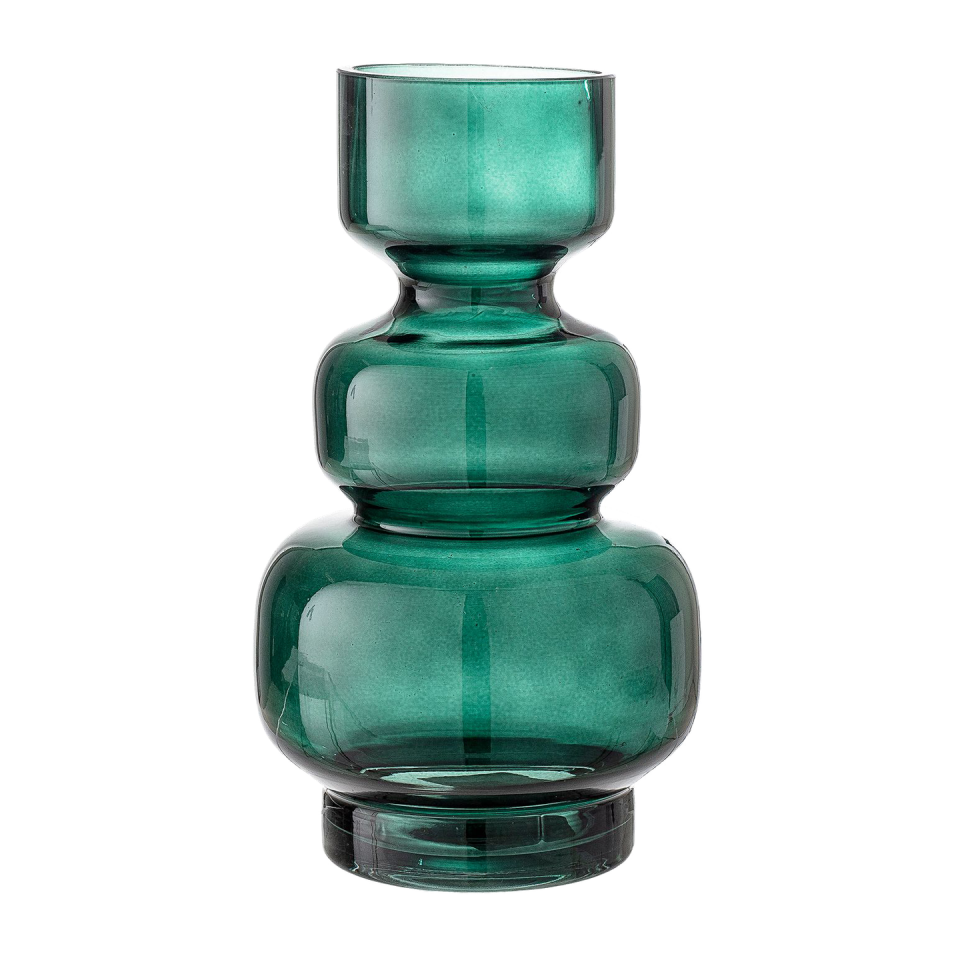
Jon Sharpe, chief creative officer at designer homeware accessories company LuxDeco.com, says glassware trends are picking up on both the catwalk and our new-found love of nature: "We've seen the prominence of biophilic seventies interior staples such as houseplants, rattan and macrame increasing for a while and other Seventies trends such as pattern, fringing and even curved shapes – all of which have seen a significant sales increase with us."
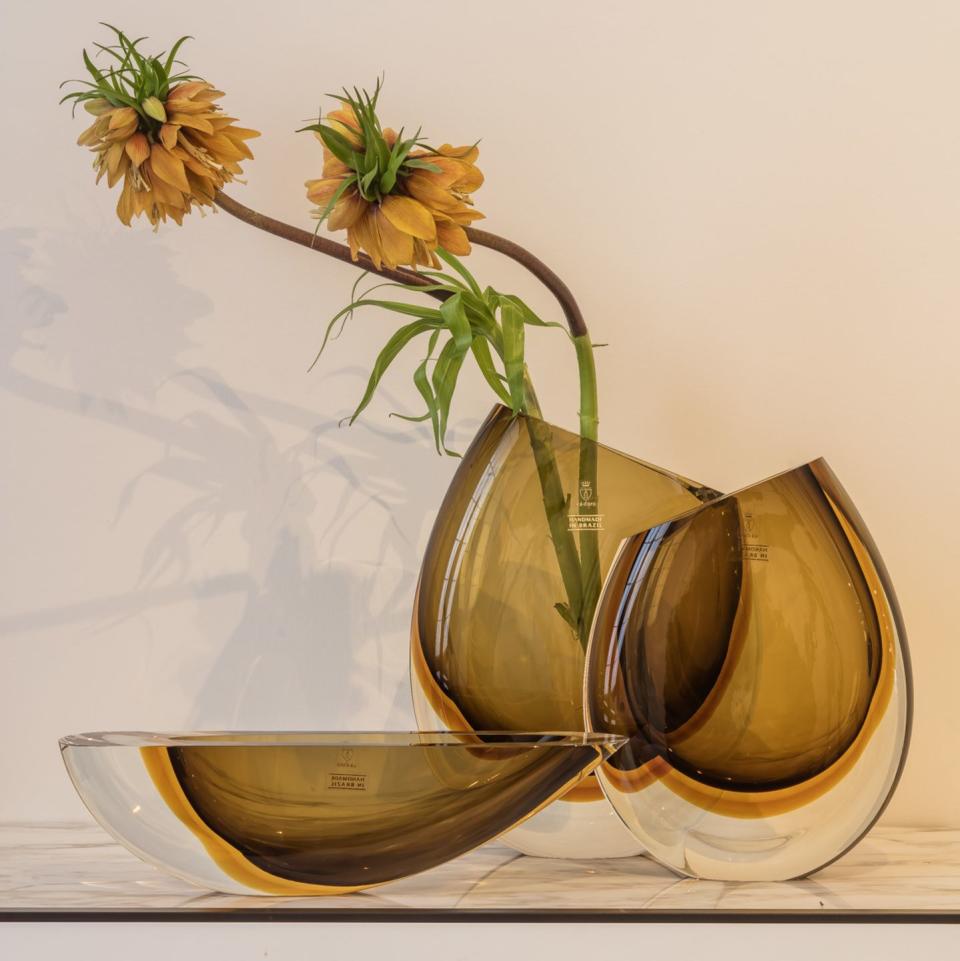
Shag pile rugs
Nothing screams 'Seventies' more than a nylon tufted shag pile rug – or worse, wall-to-wall shag pile carpet. If you're lucky enough to have pitch-pine floorboards – a very Seventies look – forget the man-made fabrics and to add warmth and colour, chose a striped recycled cotton chindi rug, from Homescapes instead.
Avocado bathrooms
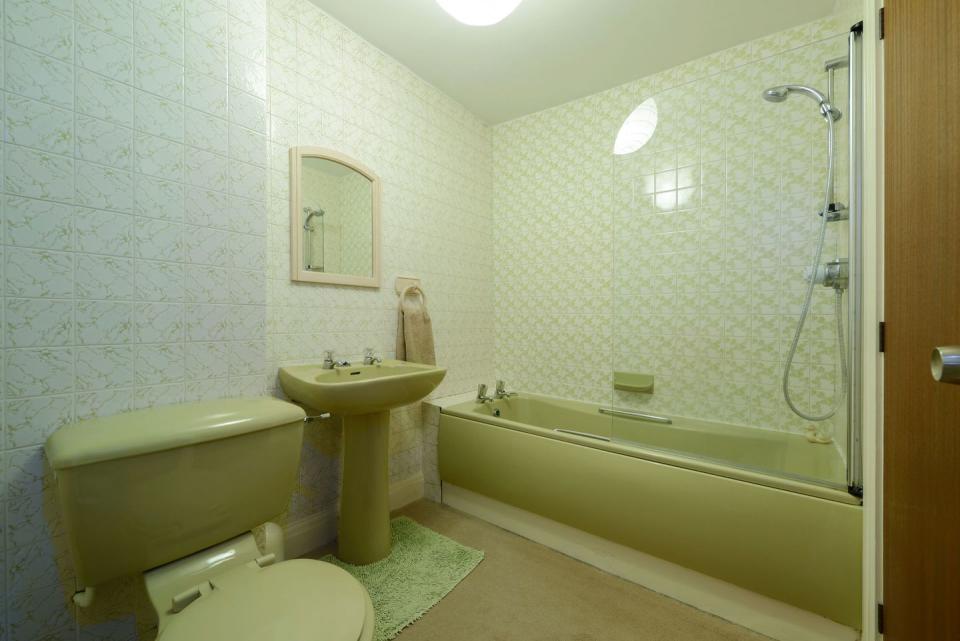
Avocado belongs on toast, not in the bathroom, despite a brief resurgence of this classic Seventies sanitaryware a few years ago. Instead, AGVA Bathrooms points towards two of this season's trends, earthy oranges and deep oak/light oat brown for a subtler Seventies re-interpretation.
Combine earthy orange shades offset by a slightly off-white, accented with a brighter relative, such as gold: "This combination of earthy, bright and an unexpected tone can be used for many colours, especially those in the warmer orange-red spectrum," says AGVA senior buyer, Fay Patel.
Deep oaks and light oat browns suggest a natural feel whilst creating a moodier, darker style reminiscent of retro country living, says Fay: "Warm lighting options with brass fixtures would add a touch of vibrance."
Nylon sheets
What were they thinking? Nylon sheets might have cut down the ironing pile but there was no excuse for static and hot sticky nights. A classic Seventies look that never goes out of style is pure white bed linen against wicker. "White is strong and modern again," says Joanna Ross, general manager of design at Sheridan. "Where colour is absent, amped-up texture and tactility steps in. Furniture and ceramics are taking on a more 'human' tone through soft curves and textured finishes, so it is natural that bedding layers follow suit."
Crazy colours
Mad mixtures were all the rage – think Tim Rice's musical Joseph and the Technicolor Dreamcoat and dear old Keith Chegwin and his Multi-Coloured Swap Shop – but we're mellower now, says Xander Shreenan, interior designer at home decor brand Dowsing & Reynolds: "Oranges and pinks were very popular in the Seventies, but you could try modernising slightly by going for a brick orange and a dustier pink. They will still give a Seventies feel but with a cleaner, more modern colour story."
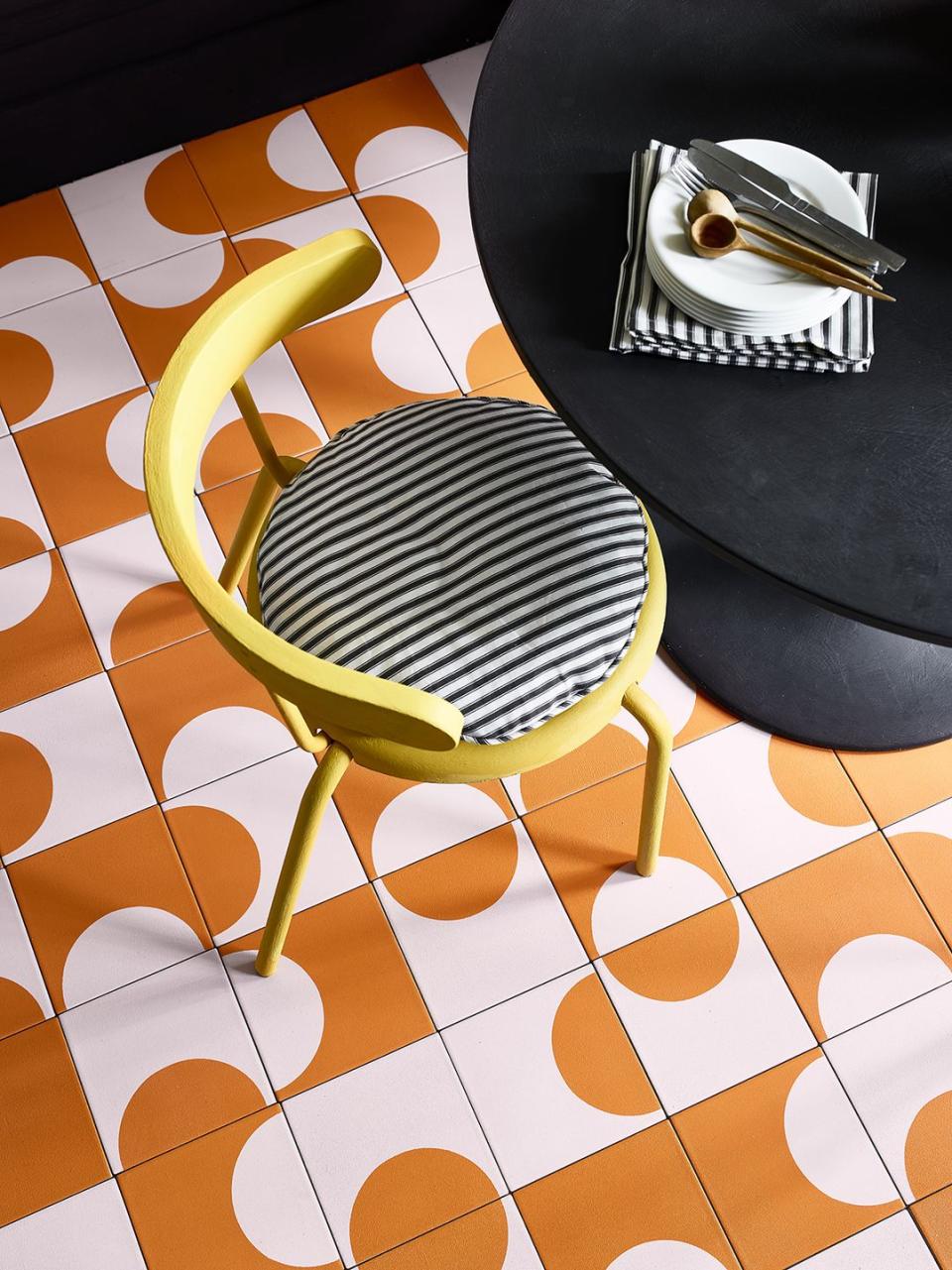
Artex walls
Shell or swirl, broken leather or stipple, whatever the texture of that Artex ceiling – and walls – it should stay firmly in the decade of Spangles and Space Hoppers. We'd rather hide slightly uneven walls with a deep dark green such as COAT Paint's Ditch The Tie or Adulting. "Pair with furniture in walnut or teak along with brass accents for that cool Seventies gentleman's club vibe," says COAT Paint's co-founder, Rob Abrahams.
You Might Also Like

 Yahoo Finance
Yahoo Finance 